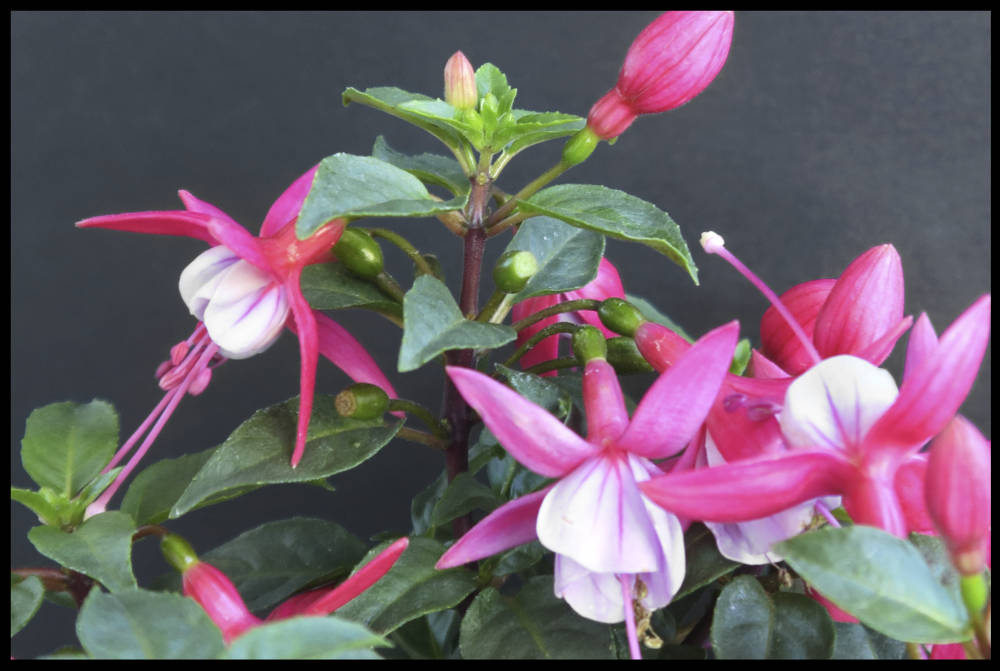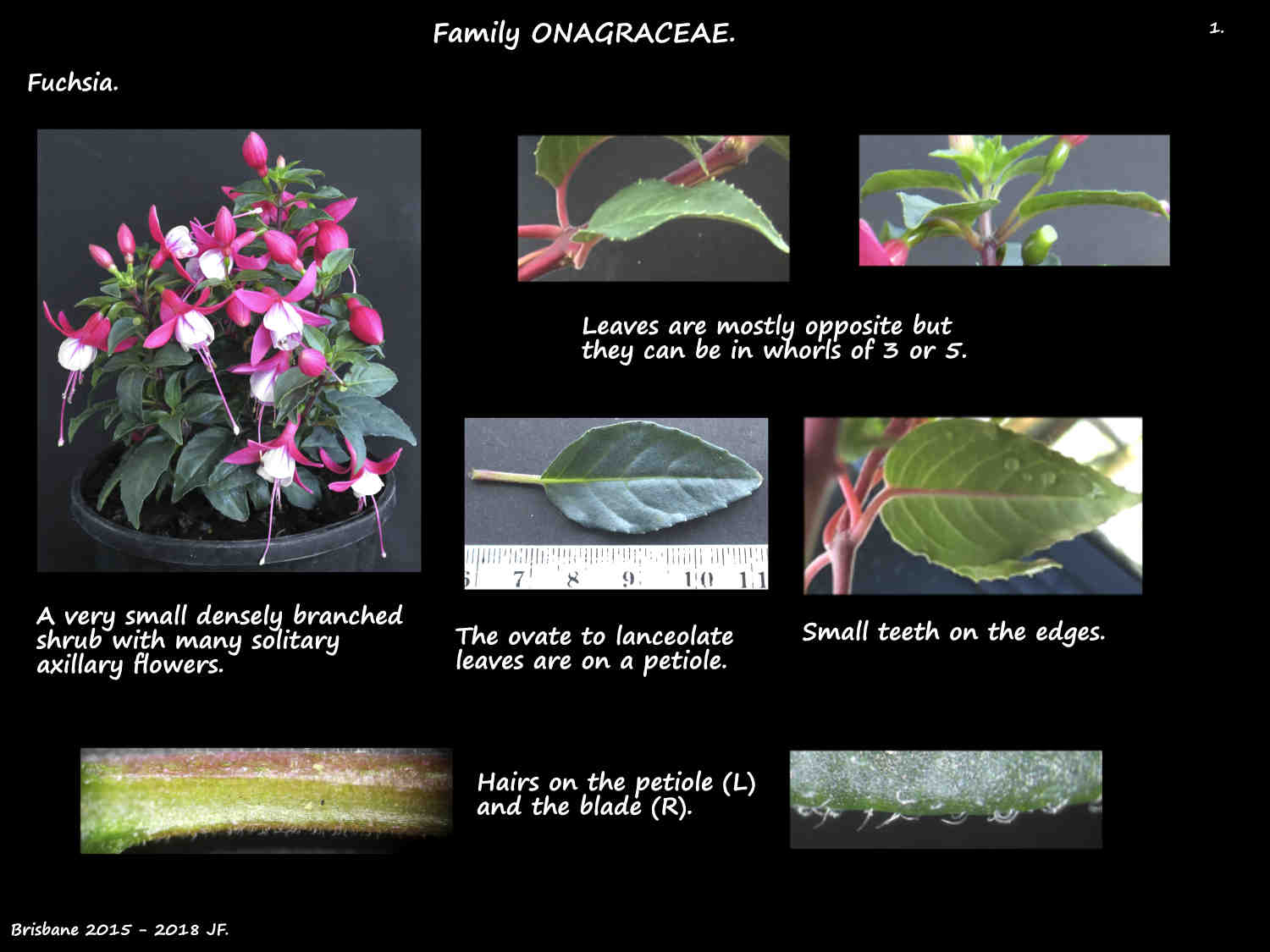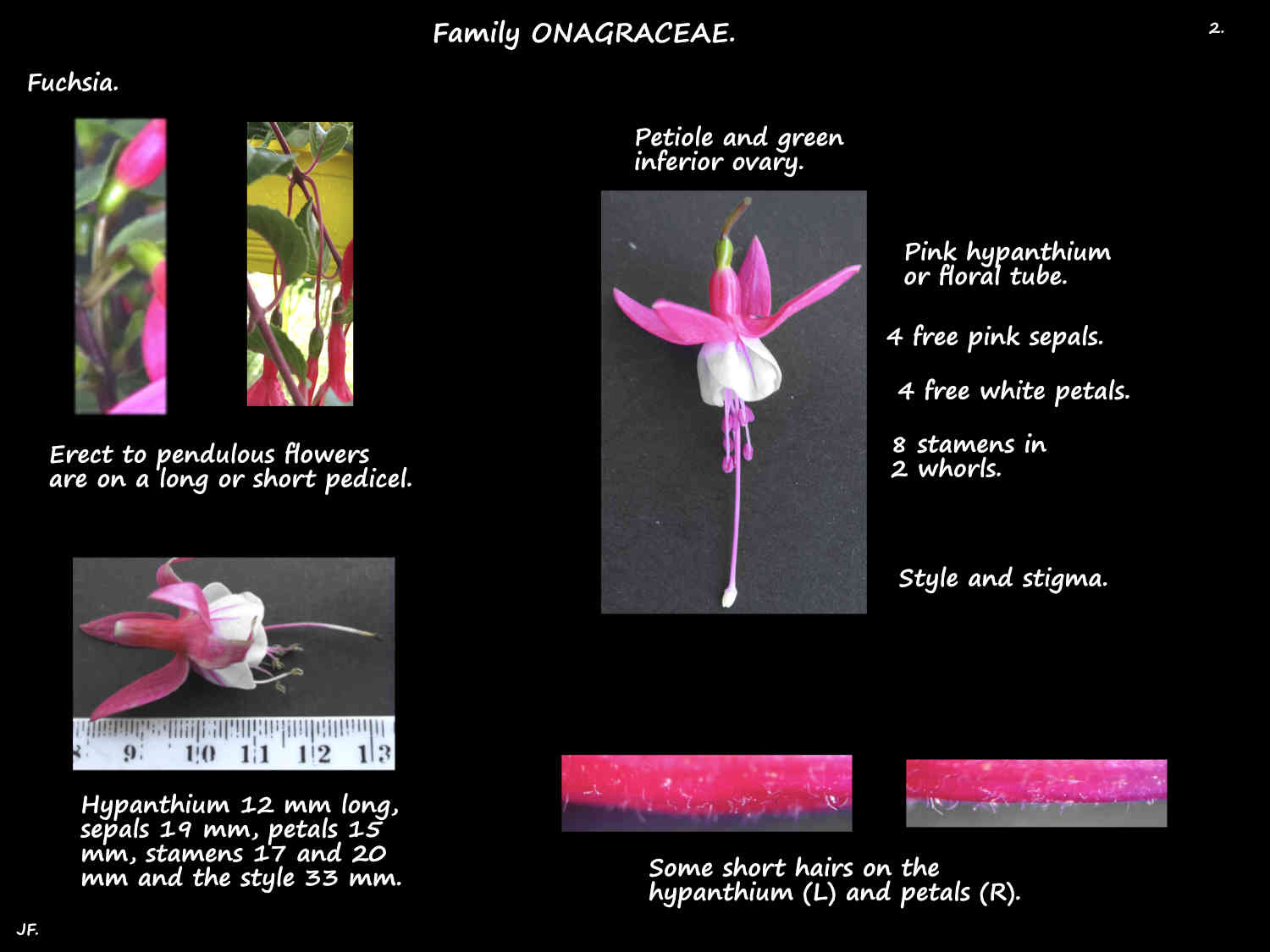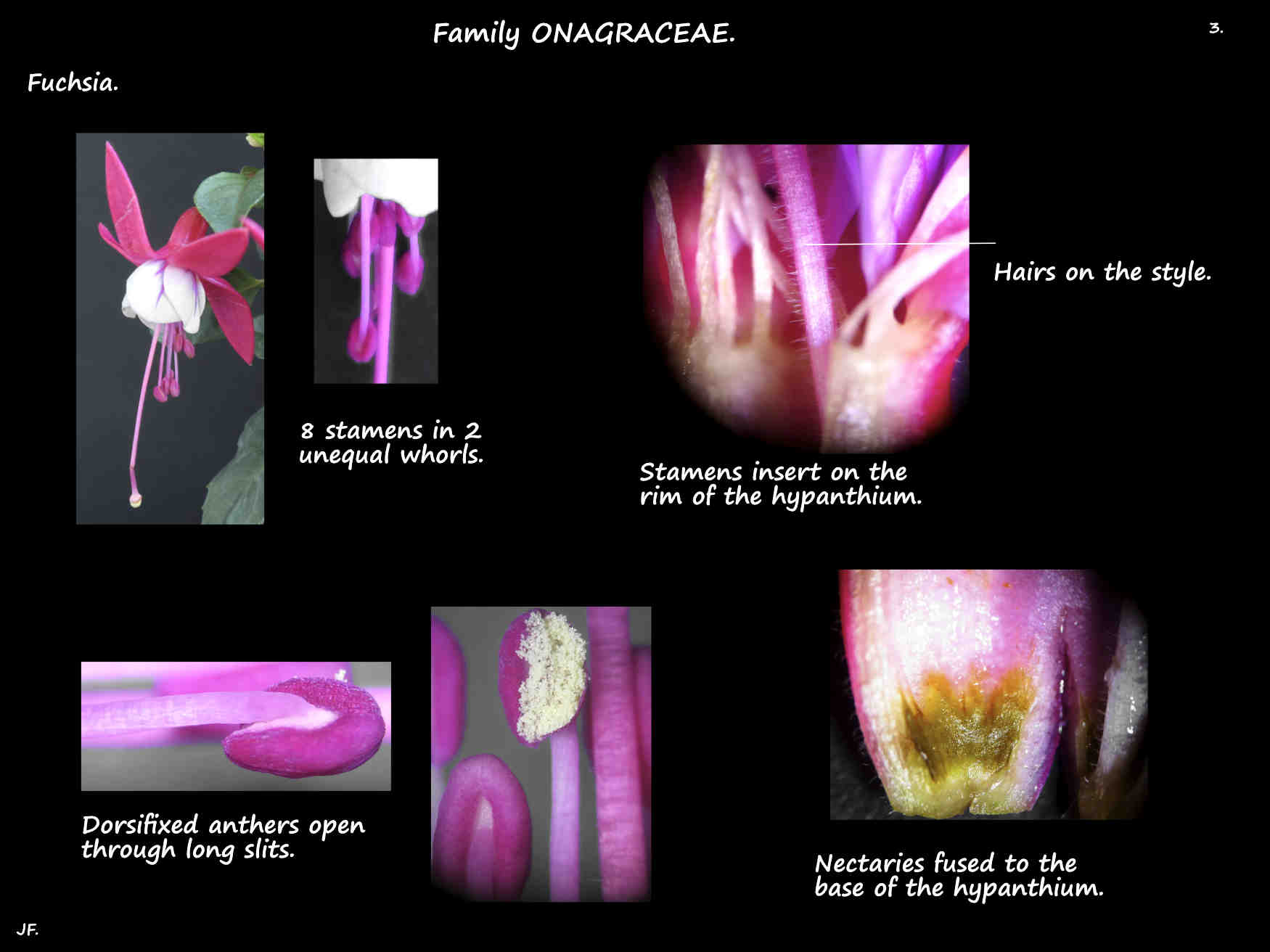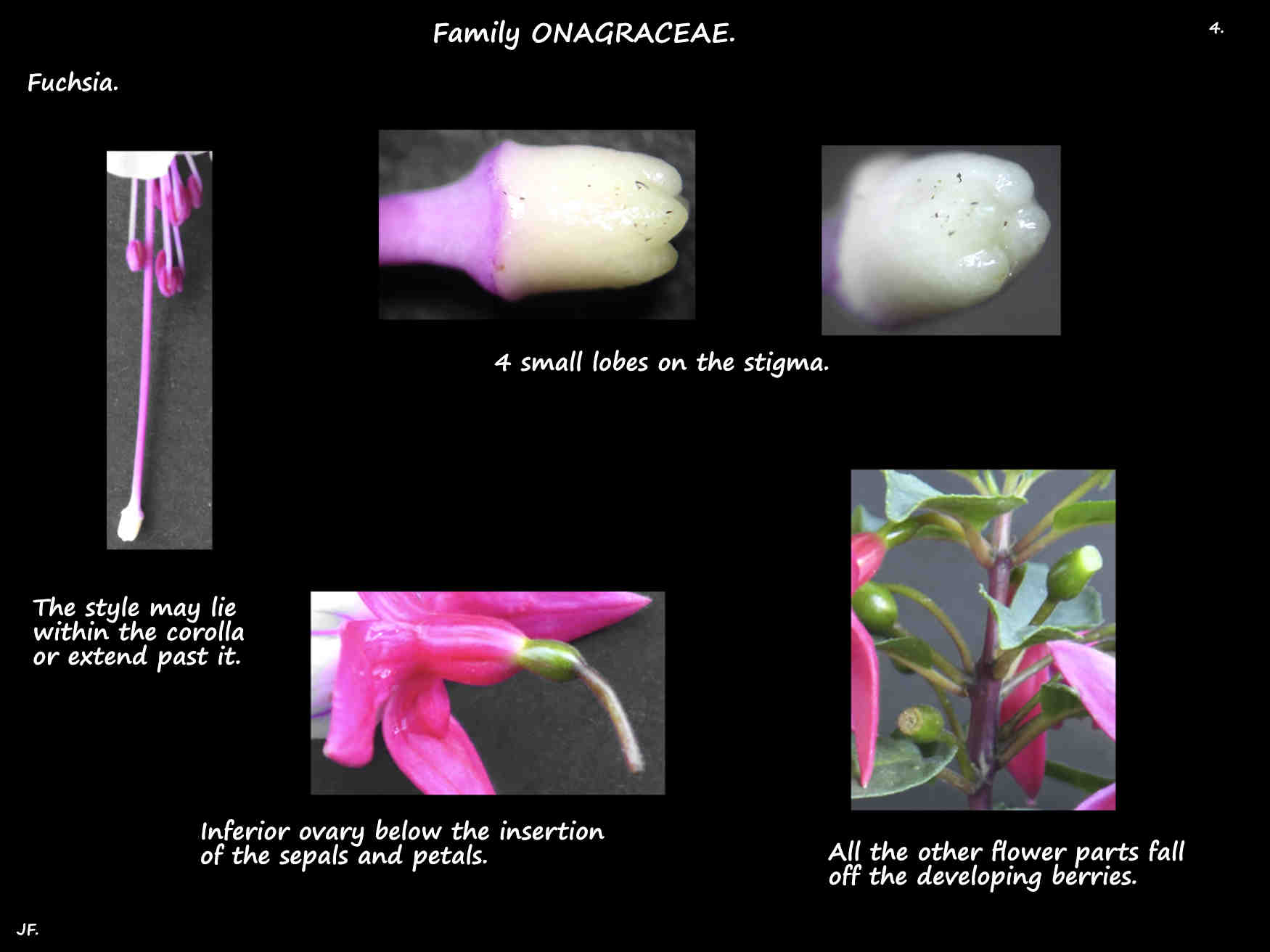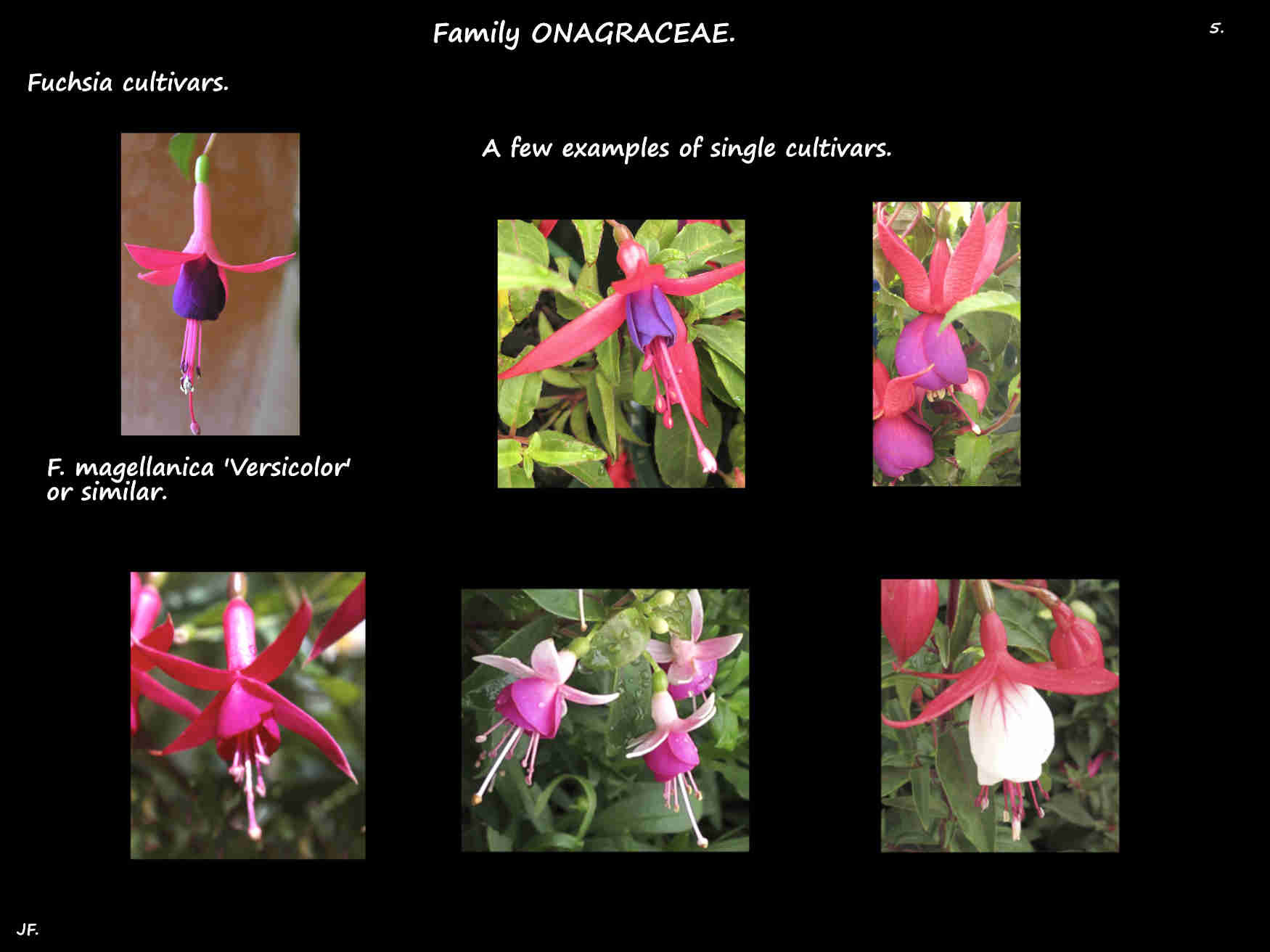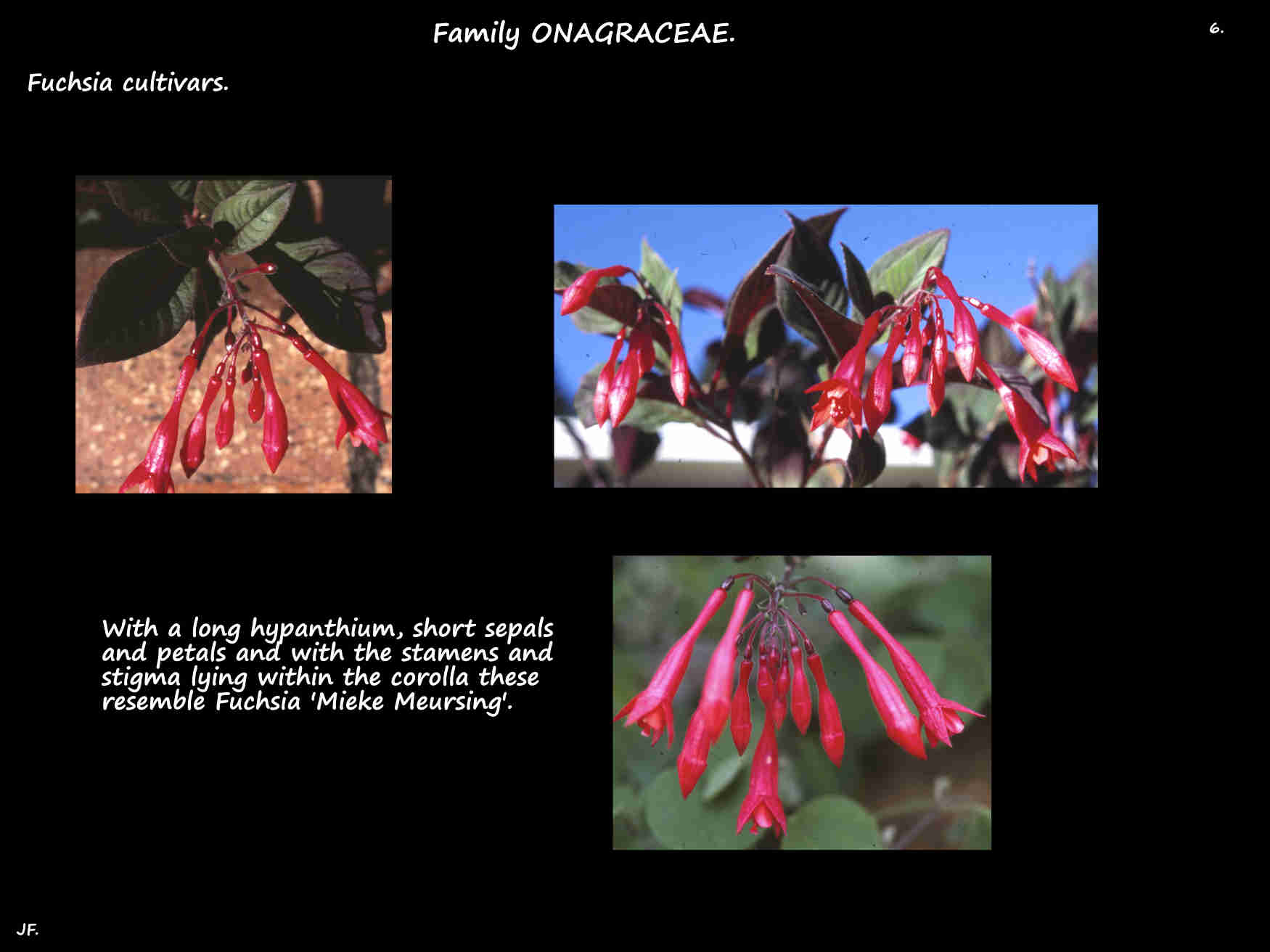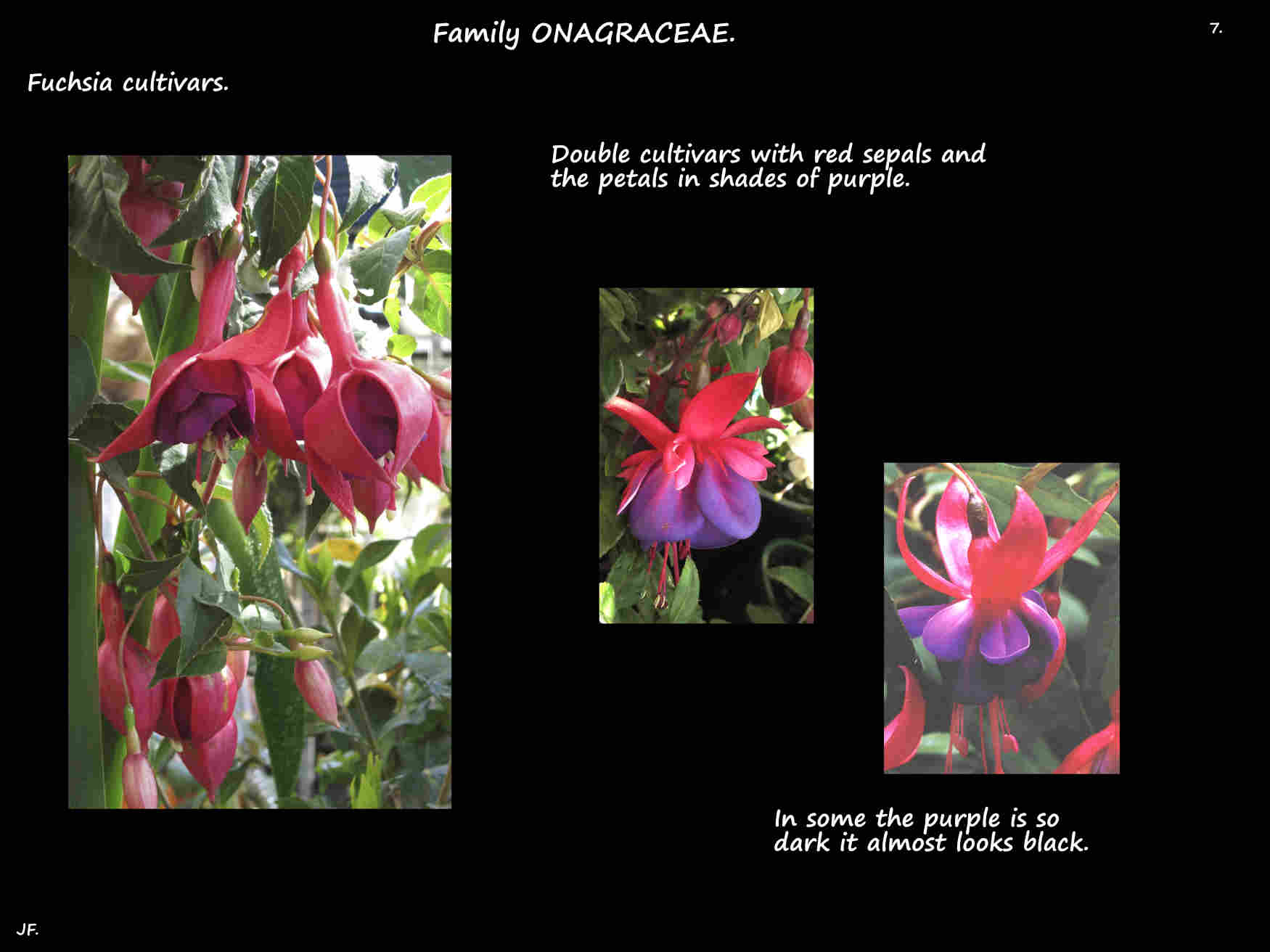Fuchsia.
Family Onagraceae > Subfamily Onagroideae > Tribe Circaeeae.
Plants of the World Online accepts 107 species and they are divided into 11 sections.
Most are perennial spreading or climbing shrubs from 20 cm up to 4 m high.
There are a few small to medium sized trees with one up to 15 m high.
Young twigs may be 4-angled and older branches may become woody.
The densely branched stems can be up to 2 m long.
They can be erect, arching, drooping or growing along the ground with an erect tip.
Leaves are on stalks or petioles with a stipule at the base.
The triangular to narrowly lanceolate stipules are under 1 cm long and 1 mm wide.
They can be green, whitish or purple and often fall off.
Leaves are mostly opposite but can be alternate or in whorls of 3 or 5.
The petioles, from a few mms up to 5 cm long are occasionally longer than the blade.
The leaves are from 1 to 25 cm long and up to 6 cm wide.
The simple green or purplish-green blades can be lanceolate to widely ovate.
The edge may be wavy, have glandular teeth and there are hairs on the veins underneath.
Inflorescences can be solitary (2 or 3) flower along branched (panicle) or unbranched (raceme-like) stems
or a terminal cluster over a whorl of leaves (involucre).
There is a leaf-like bract at the base of each flower.
The mostly tubular flowers, on pedicels can be erect spreading or pendulous.
The thin, sometimes hairy pedicels are from 3 to 25 mm long.
The flowers can be bisexual or unisexual with various combinations of one or both on the same or different plants.
The cylindrical hypanthium (floral tube), commonly 4 to 7 (2 to 15) mm long may have a swelling at the base around the ovary.
There are often short hairs on the outer or both surfaces but sometimes there are none.
The tube can be green, purple, white, pink, red, yellow or orange.
The nectary at the base of the hypanthium may be free or fused to it.
It can be a diffuse or obvious disc or ring sometimes with 4 (8) slight to marked lobes.
It can be under 1 mm in height up to 4 or 5 mm.
There are four free petal-like lanceolate sepals with pointed tips.
They are from 0.9 to 25 mm long and 0.6 to 7 mm wide.
They can be semi-erect, spreading or bent back to various degrees.
Th green red or purple sepals may fall off after the flower is mature.
Some species have no or minute petals but most have four erect to spreading ones.
They can be elliptic, round or obovate with a round or flattened tip that may be lobed.
From 0.6 up to 40 mm long they are up to around 10 mm wide.
Colours include purple or bluish-purple, white, red, pink and orange.
Sepals and petals can be the same colour such as all red or all white but are often different colours.
There are 8 stamens in 2 whorls of similar or different lengths.
They may or may not extend past the corolla and one whorl may be bent back into the floral tube.
They can be pink to red or purplish.
The purplish 1 to 2 mm long anthers shed pollen as single grains.
In female flowers the stamens are infertile.
The cylindrical inferior ovary, 5 to 10 mm long has 4 locules.
Each locule has a few to hundreds of ovules with axile placentation in 2 to 5 rows.
The thick or thin style, 2.5 to 15 (30) mm long may or may not extend past the hypanthium.
Cream, pink or purplish it may have some hairs.
The roughly spherical (capitate) stigma may be faintly grooved or divided into 4 lobes.
In male flowers the ovary, style and stigma are not fully formed.
Fuchsias are the only species in the Onagraceae family to have fleshy indehiscent berries.
The oblong to ellipsoidal berries are up to 2.5 cm long sometimes with a waxy coating.
They can be red, pink, purple to almost black.
The pale brown seeds, 1 to 3 mm long have no hairs.
Over 8,000 cultivars have been described with 2,000 to 3,000 still cultivated.
Parents are commonly Fuchsia magellanica, F. fulgens and F. triphylla.
F. fulgens has small flowers, red sepals with yellow-green tips and bright red petals.
F. magellanica has a red tube, dark red sepals and purple petals.
F. triphylla flowers are orange to coral-red.
Cultivars can be singles (4 petals), semi-double (5 to 7) or doubles with 8 or more and the petals may be frilly.
J.F.
